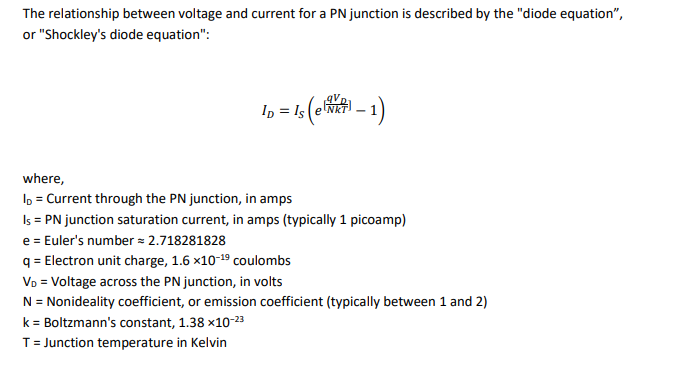The equation above contains really only three variables in it: ID, VD, and T. All the other terms are constants. Since in most cases we assume temperature is fairly constant as well, we are really only dealing with two variables: diode current and diode voltage. a) Linearize the following equation
The equation above contains really only three variables in it: ID, VD, and T. All the other terms are constants. Since in most cases we assume temperature is fairly constant as well, we are really only dealing with two variables: diode current and diode voltage. a) Linearize the following equation
Related questions
Question
The equation above contains really only three variables in it: ID, VD, and T. All the other terms are
constants. Since in most cases we assume temperature is fairly constant as well, we are really only
dealing with two variables: diode current and diode voltage.
a) Linearize the following equation

Transcribed Image Text:The relationship between voltage and current for a PN junction is described by the "diode equation",
or "Shockley's diode equation":
ID = Is (er - 1)
where,
ID = Current through the PN junction, in amps
Is = PN junction saturation current, in amps (typically 1 picoamp)
e = Euler's number = 2.718281828
q
= Electron unit charge, 1.6 x10-19 coulombs
VD = Voltage across the PN junction, in volts
N = Nonideality coefficient, or emission coefficient (typically between 1 and 2)
k = Boltzmann's constant, 1.38 x10-23
T = Junction temperature in Kelvin
Expert Solution
This question has been solved!
Explore an expertly crafted, step-by-step solution for a thorough understanding of key concepts.
Step by step
Solved in 2 steps
